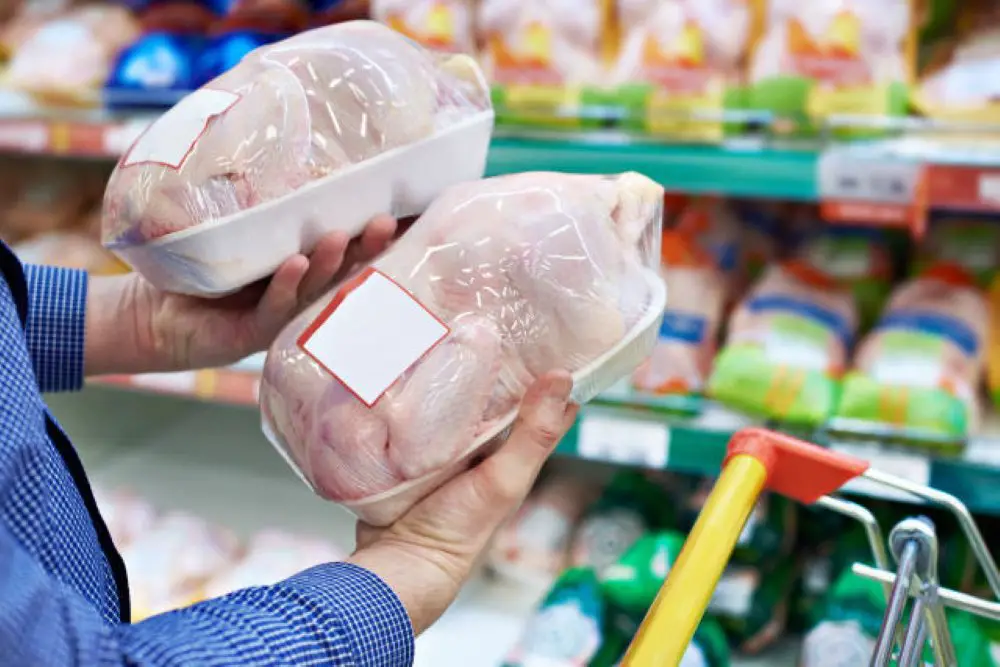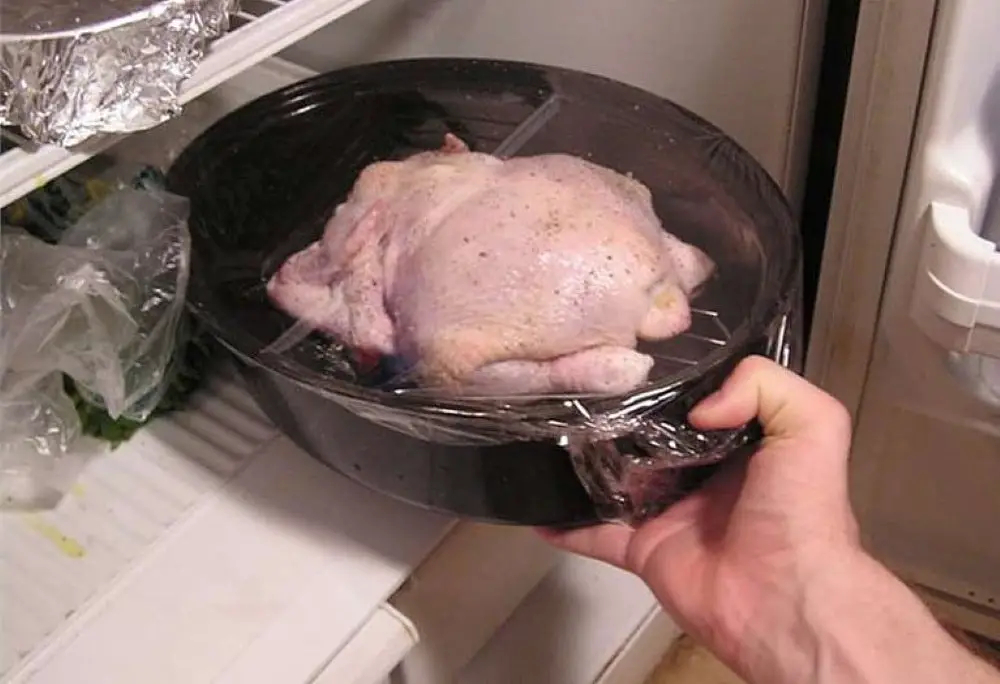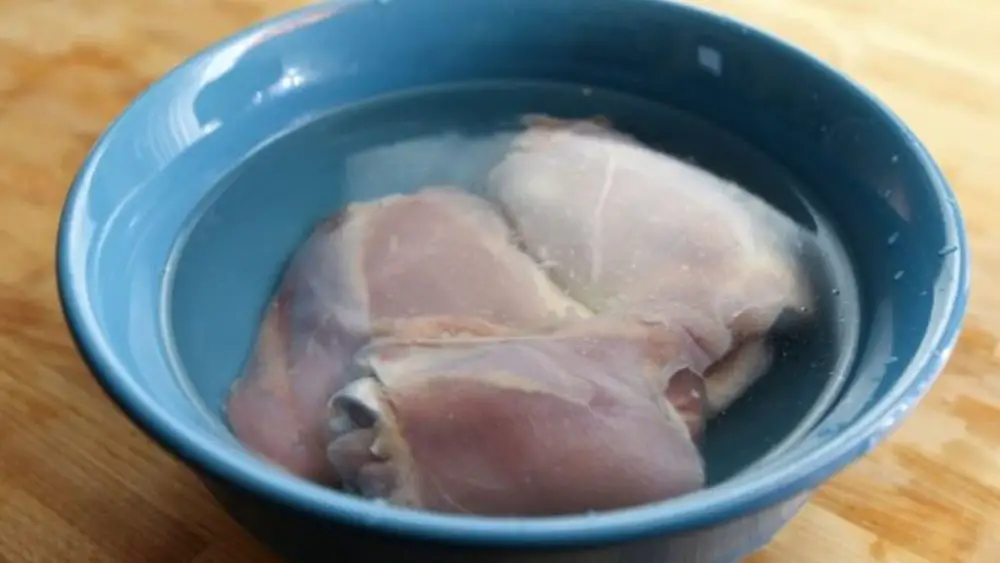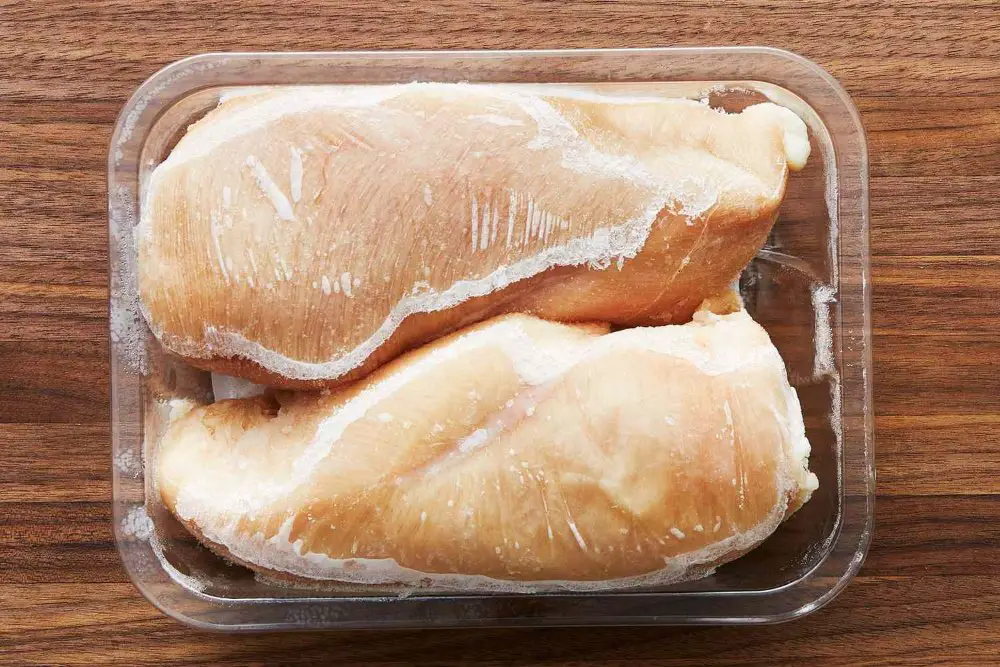There’s nothing worse than forgetting to take a chicken out of your freezer and putting those delicious dinner plants to a grinding halt. Defrosting can take ages if you’re working with certain cuts of meat (or, even worse, a whole chicken), and while you can sometimes cook with frozen chicken and simply increase the cooking time, this isn’t always the case. Alas, you’ll need a fully thawed bird for recipes like chicken parmesan or stuffed chicken.
Food safety is also important to consider. We don’t recommend it for those tempted to place their raw chicken out in the sun. This is the fastest way to expose yourself to Salmonella and the uncomfortable symptomes of a foodborne illness.
Instead of wringing your hands and ordering from your favorite takeout joints, consider some alternative solutions. These USDA and industry professional-vetted tips can help you figure out the best ways to thaw chicken if you’ve forgotten to let it defrost in the fridge. By taking these precautions, you can still have a winner-take-all chicken dinner.
Chicken food safety hacks to know

According to the USDA, salmonella can be found in up to 4% of packaged supermarket chicken. Although airtight packaging can help prevent cross-contamination, leftover juice from other chicken packages or holes in the container can leave it vulnerable. This is even harder to notice when chicken is frozen. Keep the meat separate on a baking sheet or in a roasting pan to keep things as clean as possible. Any surfaces that make contact, such as a sink or cutting board, should always be disinfected, and be sure to wash your hands after handling the raw meat.
Refrigeration is the most reliable

Planning can be a headache, and although there are many chicken-thawing hacks out there, thawing chicken meat in the fridge is a classic since it offers consistency every time. These appliances stay at the same cold temperature without dipping below 40 degrees Fahrenheit. Therefore, this is the best way to avoid bacteria, and it’s the only method for re-freezing that the USDA approves. For instance, if you don’t want to use all your chicken or decide against cooking it, it can be placed back in the freezer. However, this is only true for chicken that has been thawed for a maximum of 48 hours. Past that two-day mark, we recommend throwing it out.
When thawing chicken in the fridge, remember to place it in a container on the bottom shelf in case juices leak onto other food items. It should also be kept towards the back of the fridge, where temperatures remain more consistent. Placing it near the door will expose it to warmer air, which puts you back in the Salmonella danger zone.
Water is the fastest

Just like seafood, defrosting can be quickly completed with cool running water. Unlike the cold air in a refrigerator, water conducts heat more quickly. Be sure to use moving water, but remember never to use warm or hot water since this can impact food safety. Also, it’ll only thaw the outside, leaving the center of your chicken still frozen.
Use the microwave, but only if you have to

The USDA says that technically, you can use the defrost setting on your microwave, but this should only be done in a worst-case scenario. Chicken needs to be cooked immediately after being defrosted in the microwave, and it definitely can’t sit for over an hour. Besides the safety risks, we recommend avoiding this method because microwaves can unevenly thaw meat, which cooks the outside a bit while leaving the center rock-solid and frozen. For this reason, you should only defrost your bird in the microwave if you’re going to immediately shred it or serve it in a recipe that features a ton of sauce.








